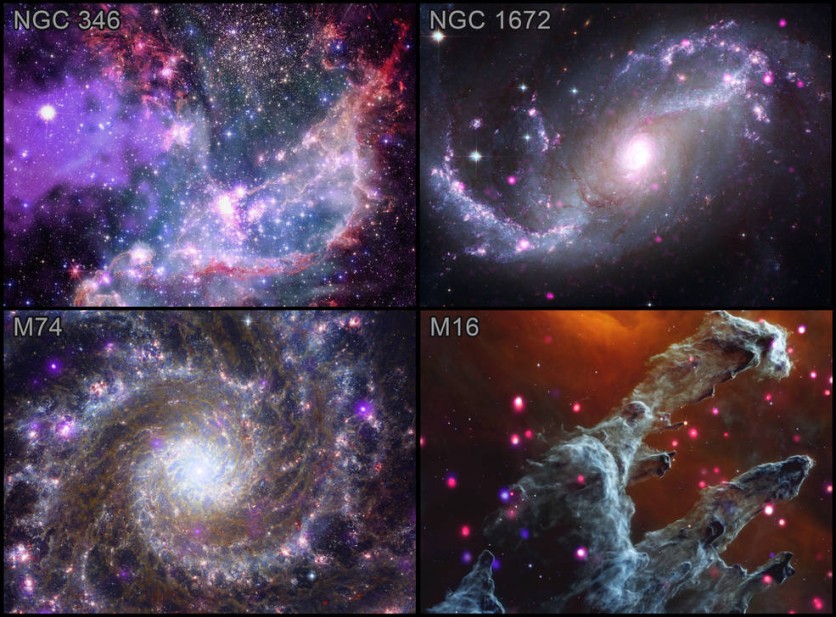In a spectacular display of cosmic beauty, NASA's Chandra X-ray Observatory and James Webb Space Telescope have joined forces to unveil a series of stunning composite images showcasing the wonders of our universe.
These captivating images, which feature two galaxies, a nebula, and a star cluster, combine Chandra's X-ray observations with the infrared data captured by the Webb telescope.
Together, they provide a mesmerizing glimpse into the hidden realms of space that are typically invisible to the naked eye.
The composite images are a result of the meticulous mapping of data collected from various space telescopes, including NASA's Hubble Space Telescope, the retired Spitzer Space Telescope, the European Space Agency's XMM-Newton, and the European Southern Observatory's New Technology Telescope.
By assigning different colors to the data, scientists have transformed intricate details and celestial phenomena into visuals that humans can perceive and appreciate.

Featured Galactic Objects
One of the featured images showcases NGC 346, a star cluster located within the Small Magellanic Cloud, a neighboring galaxy situated approximately 200,000 light-years away from Earth. James Webb's observations reveal intricate plumes and arcs of gas and dust, providing valuable insights into the process of star and planet formation.
Meanwhile, Chandra's X-ray data exposes the remnants of a supernova explosion in the form of a captivating purple cloud on the left. Additionally, Chandra captures the presence of young, hot, and massive stars that emanate powerful stellar winds.
Another breathtaking image features NGC 1672, a barred spiral galaxy characterized by its distinct straight band of stars that encircles its core.
Chandra's observations bring to light the fascinating interactions between compact objects such as neutron stars or black holes and their companion stars. The remnants of exploded stars are also unveiled, providing valuable insights into the life cycle of galaxies.
Moving on to the Eagle Nebula, also known as Messier 16, the composite image captures the famous "Pillars of Creation." Webb's image reveals the dark columns of gas and dust, shrouding the nascent stars that are currently undergoing formation.
In contrast, Chandra's sources appear as tiny dots, representing young stars emitting copious amounts of X-rays. This mesmerizing blend of X-ray and infrared data provides a unique perspective on the stellar birth processes unfolding within this celestial nursery.
The infrared observations captured by the James Webb telescope provide evidence of the existence of gas and dust within the galaxy, while Chandra's X-ray data highlights the energetic phenomena originating from the stars within its celestial expanse.
Adding to the richness of the image, Hubble's optical data reveals a greater level of intricacy, exposing additional stars and dust nestled within the intricate lanes of cosmic debris.
Related Article : NASA's Hubble Space Telescope Captures 'Butterfly Nebula' In Stunning Motion | Fun Facts About This Beautiful Space Butterfly

ⓒ 2026 TECHTIMES.com All rights reserved. Do not reproduce without permission.




